What an interesting meeting we had this month. We were hosted by Michael and Kimberley Russo on their tropical fruit farm at Mourilyan south of Innisfail. Dave Doolan led us through a potential hive split on a 5-layer T hockingsi hive, that Michael purchased hoping the natives would assist with pollination of his fruit trees. You never really know what you will find when opening a hive for a split and this hive definitely surprised us.
Hive History
Michael purchased the hive over 12 months ago with advice from the seller stating the hive would be ready to split in 6 weeks. Michael left the hive for over 12 months without splitting. He attended the AgriFutures workshop at South Johnstone in July with Tim and Steve. I spoke with Michael at the event and he expressed interest in splitting his hive, so we teed up a Cassowary Coast branch meeting at his place. We decided on mid-September as suitable due to September in the far north usually being dry and virtually the beginning of our summer. Consequently, floral and insect activity is generally high at this time and most hives are very active and thriving.
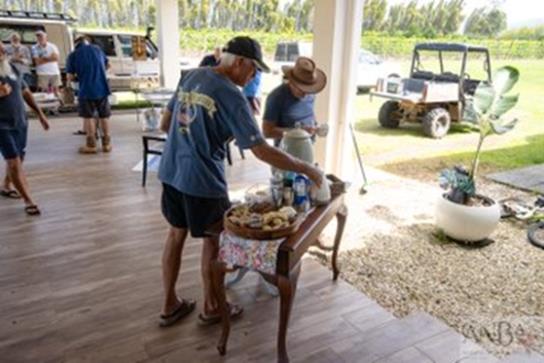
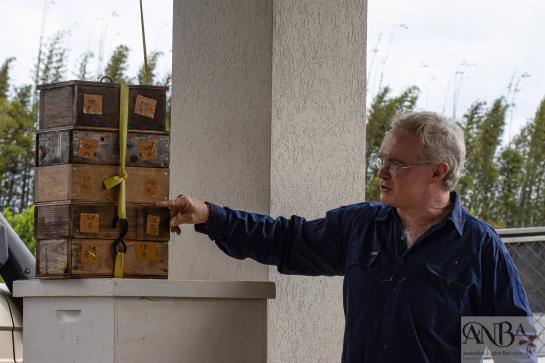
Weather
Some background on the year that has been is pertinent to this split as it gives an insight into how much foraging bees could do. The Far North has had a very wet year. Our wet season produces months on end of rain (59 dry days out of 180 in Mourilyan Jan to June this year) but by August, the weather is generally spectacular for the rest of the year and is a reward for enduring the first 6 months of rain. However, this year is an exception with 42 out of 79 rainy days at Mourilyan from July to Septe-ber and it’s raining now at the time of writing. There were also many cloudy days amongst these days. We’ve had a milder than usual winter with daytime temperatures in the mid 20’s and overnight temperatures hovering around 20 degrees which should be good conditions for bees.
The Farm
The fruit farm is surrounded by banana and cane fields. Trees growing on the farm are Annonas: soursop, sugar-sop and rollinia; as well as some natives and citrus trees. The trees are mature enough to be flowering and fruiting but have not been in the ground for a great length of time.
The Split
We recreational bee keepers don’t conduct splits very often so when we do, it requires a significant amount of thought and planning. Dave ran through 11 possible scenarios of what we could potentially find in the split and how to deal with each one. Michael was convinced the hive was ready to split but we still had ‘close it up’ and do nothing as one of our options.
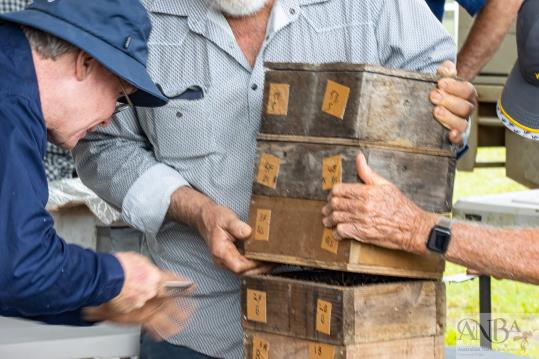
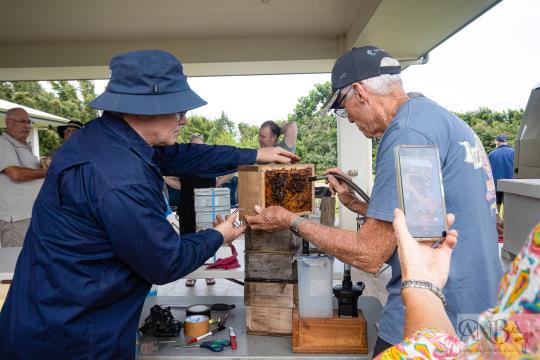
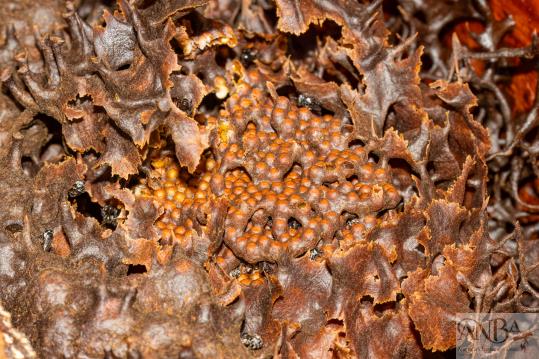
An issue with box size arose as the empty box size didn’t match the old hive and ‘adaptor plates’ were manufactured prior to the meeting by Dave, so different sized boxes could be joined.
We opened the hive level by level to find the top layer half full of stores, 3rd and 4th layers almost empty and a small brood ball in the first and 2nd layer with limited pollen stores. Overall, there were low bee numbers for the size of the hive box.
On seeing the condition of the hive and after much discussion, we decided to remove a layer, add an adaptor plate and close the hive. Much discussion followed on the causes of the poor hive and course of action to attempt to save the hive.
Theories and Conclusions
Attendees discussed possible causes for the weak hive.
They included:
- Poor weather conditions (rain and cloudy days) for foraging hence the stores have been consumed and remain at a very low level;
- Food shortage due to the only available food being flowers on fruit trees. Not all fruit trees provide bee food e.g. soursop. There may also be months when there are no flowering trees. Large areas of the farm are mown grass.
- The possibility that there is no queen needs further investigation as the hive may have failed to requeen.
There’s a high chance there are no other hock hives in close proximity, which could mean lack of males from other hives to mate with.
Solutions going forward
- Dave will be monitoring the hive with Michael. Suggestions for helping the hive are:
- Weigh the hive (which we did at the meeting) and continue to monitor the weight. If the weight reduces, take action by moving the hive to a food rich area, or hook it up to another hive to carry out an eduction or conduct a brood transfer.
- Count the bees returning to the hive, with 30 to 60 per
minute indicating an improvement in hive health. - Split when weight and returning bee numbers are significantly increased
- Spend time looking at the flowers on the fruit trees around the property to determine if the trees are actually providing bee food and if the bees are suitable pollinators.
- Plant more bee food. Suggestions include: Rocket, zinnia flowers, dragonfruit, Alexander palms and macadamias.
Allow some areas to ‘weed up’ and flower temporarily instead of having large areas of mown grass.
This will be a quick way of providing flowering plants. - Sue, the bait hive queen, has taken the removed layer to Bartle Frere to try to entice a hive into the removed
layer that contained a small amount of structure.
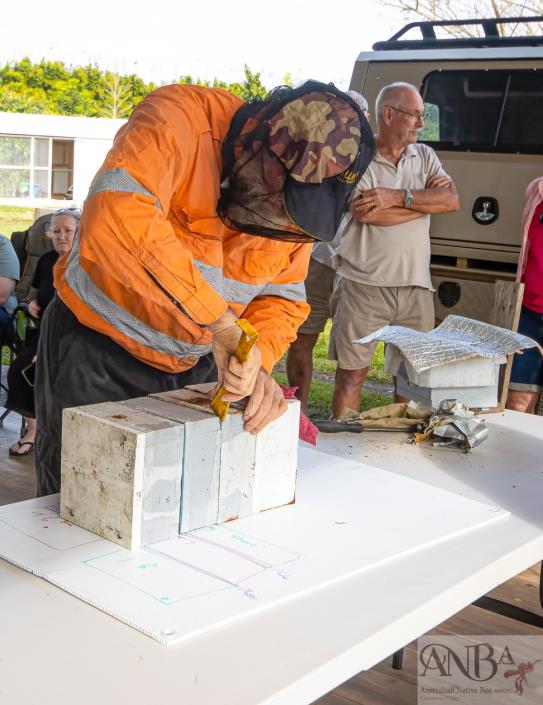
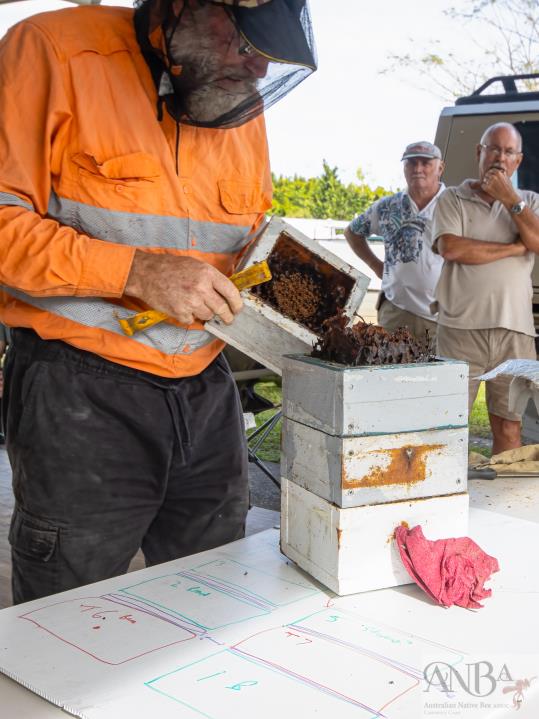
Neil saves the day
Finally, an attendee Neil, who lives close by, ducked home to pick up one of his small but thriving hock hives.
He generously split this hive onto Michael’s empty OATH hive. So in the end, we had a positive outcome with Michael
ending up with a second hive.
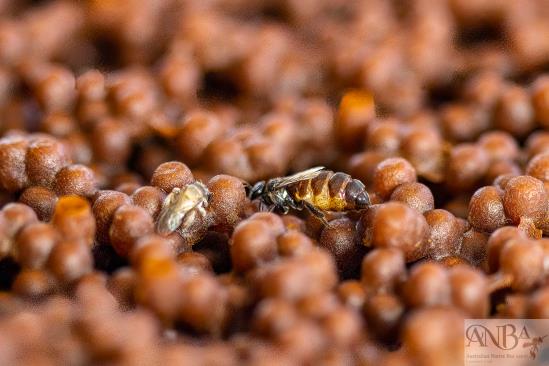
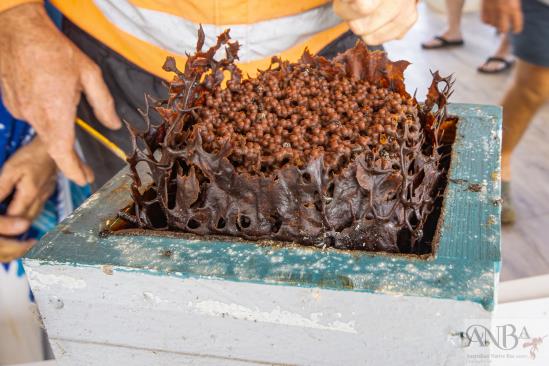
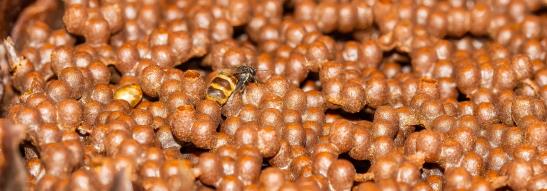
Thank you to everyone who travelled from near and far to attend the meeting. It was great to have the Table-lands and Cairns folk join us. A big thanks to David Doolan for doing a great job of leading the discussion and the split. Thanks as always to Jane for your fantastic photos.
And lastly, thank you to Michael and Kimberley for hav-ing us at your house and for the delicious afternoon tea. I know many of the attendees got a lot out of working through the attempt to split your hive. We look forward to hearing the progress of your hives.
Our next meeting will be held at the beginning of Australian Pollinator Week on November 11 at 2pm at Ninney Rise, Mission Beach. We are in the process of planning the event and hoping to have a photo display, hive display and potentially a honey tasting competition if we have enough honey samples available. More information will be published in the October Cross-Pollinator.
From: Liz Lang, Secretary / Treasurer
Facebook page https://www.facebook.com/groups/1703605019824793/
